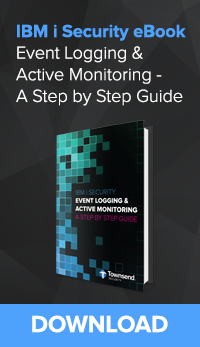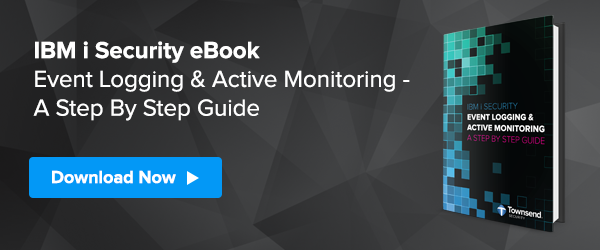IBM i (AS/400, iSeries) customers now know that their systems are no more secure than any other. That is, they are just as much a target as any Windows or Linux server that exist in less secure network environments. This is not a criticism of the IBM i security implementation, it just reflects the fact that our IBM i servers are connected to a wide range of other devices including user PCs, network devices, local and WAN networks, and so forth. The attack surface is broad, IBM i servers are a rich target for data thieves, and we are all just one user PC infection away from an IBM i server data breach.
 A lot of IBM i customers postpone deploying a system logging and SIEM solution to actively monitor for security threats, even though this is one of the most effective means of detecting and preventing a data breach. There is a reason that the Center for Internet Security recommends system log collection and monitoring with a SIEM solution as the 6th Critical Security Control. It just works really well when done properly.
A lot of IBM i customers postpone deploying a system logging and SIEM solution to actively monitor for security threats, even though this is one of the most effective means of detecting and preventing a data breach. There is a reason that the Center for Internet Security recommends system log collection and monitoring with a SIEM solution as the 6th Critical Security Control. It just works really well when done properly.
I suspect that cost is one of the reasons that projects are postponed. This reasoning is “penny wise and pound foolish”. Here’s why:
- There are now very cost effective log collection and SIEM monitoring solutions available for the smaller Enterprise. Some of these solutions are cloud-based and some can be deployed in VMware infrastructure. Cost is not as big an issue as it has been.
- The failure to collect system logs means that it will be difficult to do the forensic investigation that you must do after a data breach. Imagine a costly data breach and then imagine not being able to figure out how the data thieves entered your system! All too often this means that a second and third data breach happens after the first. Without collecting system logs you won’t be able to deploy the forensics tools to trace the path of the cyber criminal through your organization. Another data breach is almost a certainty.
- Early detection is one of the most effective means of preventing the data breach. This means large savings on outside security consultants, litigation costs, and the deployment of log collection and monitoring tools at inconvenient times. Early detection is a life-saver for those who can prevent a breach.
- Log collection and SIEM monitoring solutions are easier to deploy than ever. While deploying an active monitoring system was complex and costly in the past, many SIEM solutions can be deployed and start working to protect your organization is just a matter of hours. Unlike in years past when SIEM solutions took weeks to install, configure and deploy, many are now extremely easy to setup and administer.
From a Governance, Risk Management and Compliance point of view deploying the CIS Critical Security Controls is a minimum requirement. Here is what the California Department of Justice said in this year’s data breach report under “Recommendations”:
“The 20 controls in the Center for Internet Security’s Critical Security Controls identify a minimum level of information security that all organizations that collect or maintain personal information should meet. The failure to implement all the Controls that apply to an organization’s environment constitutes a lack of reasonable security.”
Every senior executive in the modern organization understands that canceling the fire insurance policy on their headquarters building would be a bad idea. You would be one fire away from the end of your career. The same now holds true for IT security. Shareholders and the board of directors now understand that the failure to use reasonable measures to protect data assets is a fundamental failure of governance. Don’t be the executive who has to try to defend that failure!
Patrick

